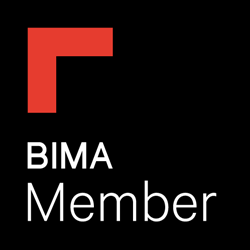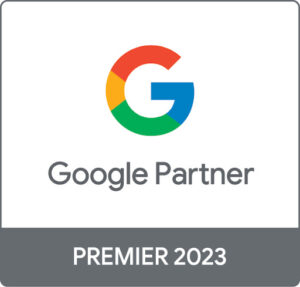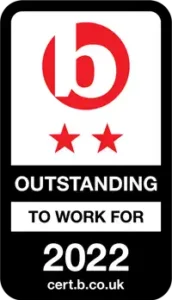It’s time to reflect on the latest Google Core Update and like always, it rocked the SEO world. With every core update that rolls out, it is always best not to panic. SEO is a constant evolution of tests and new “best practices” and this time was no different. Whilst we all knew it was coming, it still hurts when we see fluctuations in our reports and that is why we will be breaking down our findings from the latest Google update and share what you can do if you have been hit.
When a core update strikes, there are always going to be winners and losers, the aftermath is where SEO-ers, business and website owners gather as much information as possible to try and work out why they have been targeted.
However, unlike the previous update that focussed largely on page experience, this May update didn’t focus on one area, making it all the more difficult to unpack. Read on to find out our key takeaways from Google’s May Core Update.
What is a Google Core Update?
Google core updates are important events for website owners, marketing managers and SEO-ers everywhere. These regular algorithm changes and updates can often be blamed for keyword fluctuations, traffic and revenue drops, however they can also benefit your site greatly and even its organic visibility.
A Google core update happens when Google makes significant and broad changes to its search engine algorithm that determines which websites and content pieces rank for each search term or what we like to call “keywords”. Core updates are always centred around improving search experience for users, and making sure that Google is providing relevant, useful and trustworthy content to individual users looking for specific information based on their search intent.
It is usual for core updates to roll out several times a year, with smaller algorithm updates in between. Google are often known to be secretive with what information they provide marketing professionals with, however, they shed just enough light on the updates over on their Twitter to welcome SEO chatter.
What happened in the May 2022 Google Core Update?
Whether you’re a business owner, marketing professional or just getting started, below you can find the key takeaways of what went down in the May Google Core Update, so you don’t have to scour the internet for answers; it’s all here for you!
Key takeaways from the May Google Core Update
Google’s Word
On the 25th of May 2022, Google released a statement that they are improving their ranking factors with another core update and it will take 1-2 weeks to roll out. Then on June 9th, Google announced that the update had finished rolling out and we should expect to see some “notable effects”.
What’s interesting is that in their statement they said that if a site does experience drops, there may not be a solution for this and therefore should not try to be fixed as there might not even be a fix for the issue. Additionally, they stated that “there’s nothing wrong with pages and websites that perform less well after a core update”, the updates don’t target specific websites or pages, the changes are to improve Google’s system that measures content overall.
Whilst this is not what you want to hear if your website has taken a hit, Google isn’t known for being a huge fan of SEO and we believe there are always improvements that can be made. Statements from Google can often be fairly cryptic and sometimes vague, however, it is safe to say that the recent update yet again focuses on content. Which lead us nicely onto the ranking signals they take into consideration called E-A-T.
E-A-T (Expertise, Authoritativeness and Trustworthiness)
Unfortunately, this has nothing to do with food. E-A-T refers to Expertise, Authoritativeness and Trustworthiness. It’s one of Google’s concepts to help measure the quality of a website and if you’ve noticed a large drop in rankings since May/June, reevaluating and refreshing the content on your website, in line with the information Google provides, can be a good place to start.
So, let’s start with the E – Expertise. This focuses on website content and particularly the author of such content. Expertise refers to the amount of knowledge and experience someone has in a field and how qualified they are to give information on a topic. What you’ll often find is that many websites won’t list an author on the side of their content pieces, and without this added information, Google cannot determine how reliable a guide/ topic or general advice piece is without ensuring that it has come from a reliable source. If all of your content is branded e.g. no identifying content writer, then perhaps looking to build up your brand recognition and reputation in your field is the next best way to appeal to these guidelines.
Next comes the A – Authoritativeness. If a person was searching for medical advice, Google will be looking to prioritise content that has been written by a medical professional as opposed to a blogger trying to rank for such terms. When you think about it, this point seems obvious! If you are looking up legal advice for how to get out of a bad contract, would you rather see this from someone who has only been studying the topic for a couple of months or someone who has worked years in the field of law and has dealt with such matters frequently? Ensuring that your content is being written by professionals in your industry can have a positive impact on your ability to rank. Additionally, Authoritativeness can also be determined by the number of backlinks and referring domains you have to your website and particular pages. If many others are using your content to link back to as a trustworthy source, then Google will also take this into consideration.
Finally T – Trustworthiness; Google’s number one priority in SERPs is to provide users with valuable and trustworthy content that meets their needs and answers their specific query. E-A-T combines together to represent three important factors that you would hope to see in content you are being provided with. Each element is just as key as the other and works together to influence a website’s rankings, so that you as a user are receiving the best information from industry specialists.
If you are currently not being recognised for your efforts and expertise in a particular industry, then looking to build up your brand and name recognition is a must when it comes to showing Google authoritativeness in your niche/market. E-A-T has been outlined by Google themselves as consistently important criteria to adhere to when writing digitally-accessible content and even with Google’s frequent changes and algorithm updates, this still remains to be a vital part of the ranking process.
Search query ranking drops
The point of SEO is to rank for queries that users in your industry are searching for, this means that we all have certain pages with a keyword target in mind. In doing this, we create content for that particular keyword in the hopes it will rank. However, within this content you may have answered many more questions than the one you are targeting, and in some cases this can make the article less specific to the overall topic. With Google’s algorithm of understanding semantic content topics evolving, it may be that your article may no longer be the best fit for the query.
Use the below steps to see what queries have suffered a drop:
- Check your Google Analytics and see if the drop started on the 25th of May. This will help you determine whether the drop is associated with the core update.
- Whilst still in analytics, check to see what pages were hit. Check your most viewed pages as these are the drivers of your traffic and if they have seen drop, you will notice an impact.
- When you figure out what pages have been hit, it’s time to find out why. This is where Google Search Console is handy. Under the performance report, you’ll be able to see if there was a decrease in clicks when the core update hit. From here you can find the affected page and compare the search queries from before and after the update. You want to focus on impressions so you can see if there has been a drop in visibility for your search queries you were previously ranking for.
- You will also want to calculate the number of clicks you were getting before and after on those search queries to see if this adds up to the drop you are seeing in analytics.
The nature of SEO is always to be prepared for specific updates, however we never know what Google is going to throw at us next. One focus that has stayed consistent is content. Don’t completely change your site’s content after an update occurs, use the above steps to outline what queries suffered and make a note to see if there is a correlation you can uncover. Now you have a guideline to work from when the next one strikes. Always remember that it might not be that your content is bad as Google has stated, it just might not be the most relevant anymore. Creating evergreen content can ensure that your articles remain relevant.
Shuffled featured snippets
From the aftermath of the update we’ve seen a jumble in websites that were ranking for featured snippets. Some websites that were ranking previously no longer do, and sites that have never had featured snippets now do. However, this re-jumble is not something that is unique to this update, it’s something that spiked after the June Core Web Vitals Update last year. Losing your website’s snippets can result in a substantial drop in traffic even if they dropped a few positions, and especially if your snippets were ecommerce-based.
One thing to remember is that this does happen when a google update is rolled out, so if you feel like you want to change your content to prevent pre-emptive drops, it’s not guaranteed to work.
SERP Shifts
Commodity content is being produced at the highest rates currently, if you aren’t creating completely original content, Google will struggle to rank your content against others that are more or less identical. Whether you use an automation tool to write your content, or you use other blogs as research for yours, you should always add in an element of originality to differentiate your content from your competitors. If your content remains the same as the competition in the SERPS, the only other factor Google has to decide whether to rank yours or not is authoritativeness. So, whoever’s website has the most backlinks or highest domain rating, may win the top position. The easiest way to stay ahead is to create original and unique content.
Need help with writing original content for your site? Contact our friendly team at enquiries@helloseed.co.uk and find out how we can help push your onsite content and increase leads.
Foolproof ways to regain your lost traffic:
- Create tailored content for the search queries that dropped.
- Don’t dwell on the past and chase lost snippets, write new content in the hopes you’ll gain new features.
- Create new unique and original content.
When did the update finish rolling out?
Although the update was rolled out in May, it doesn’t mean it stopped then. You might be wondering when the update finished so you can compare your rankings from the beginning to end.
Google confirmed on Twitter that the May 2022 core update has now finished rolling out. The update took 15 days to roll out, starting on May 25, 2022 and ending on June 9, 2022.
It can take weeks to still see the aftermath of the update so don’t be surprised if you’re still seeing repercussions almost 2 months later. Focus on ways to move forward and use content as your driving force.
Conclusion
Google updates come and go, some hurt more than others. It’s important to remember to not panic when the next one comes along – wait a few weeks and observe and research, whilst others rant on Twitter. Unique, relevant and original content is still king!
Seen a drop since the update and unsure on what the issue is?
Our expert SEO team can help. Give us a call or pop us over an email to discuss your pain points. We look forward to hearing from you.








